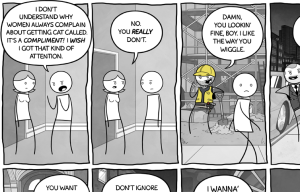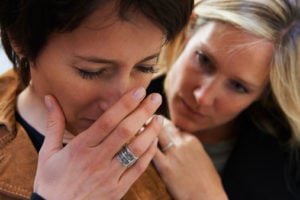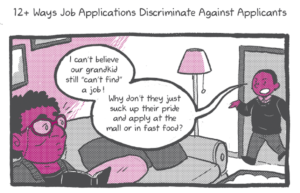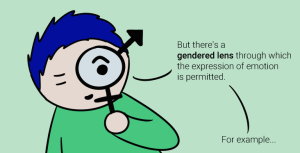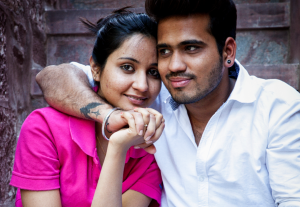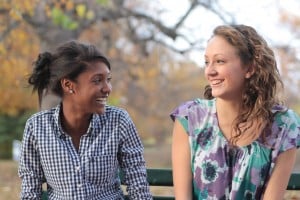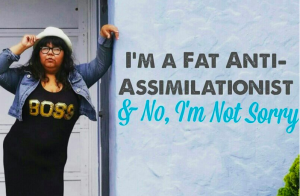Our climate future, ravaged by intense weather events like heatwaves and hurricanes, is becoming more and more menacing each day. So it makes sense that urban planners and policy makers are trying to find a way to prepare our cities’ infrastructures for what’s to come.
Urban planners handle a variety of responsibilities around community development and design. They manage everything from transportation planning to park placement and design and land-use zoning.
If you look around your town, city, or community, chances are an urban planner had a hand in it’s completion. From malls to libraries to city centers, urban planners help create our spaces.
People don’t often think of urban planning and climate change in the same sentence, but the two definitely intersect.
We dwell on the importance of our cities ability to be “resilient and sustainable;” we want them to bounce back after inevitable climate change-related natural disasters.
But what are our cities bouncing back to? Those who are the most affected (duh, poor communities) need to be taken into consideration as climate change worsens.
Urban planners are on the front lines of this battle, and some urban planners of color are making sure these communities aren’t forgotten. They understand because they’ve been in these communities; they have lived there and experienced the conditions firsthand.
The work of urban planners of color is not only important because of the dire state of our climate future but it is also a way to push back against a federal government that has taken steps to halt requirements and, in doing so, has made climate change an integral part of community development planning.
In August, shortly before Hurricane Harvey ravaged Houston, TX, President Trump signed an executive order to roll back regulation that forced federal agencies “to take into account climate change and sea-level rise when rebuilding infrastructure,” according to the New York Times.
Even though 13 federal agencies — including NASA, the EPA, and the Department of Defence — released a report speaking to the gravity of climate change and this potential mistake, the Trump administration refuses to acknowledge it.
If climate change isn’t addressed at the city planning level our homes will continue to be destroyed and devastated by its impacts. Climate change is killing us and destroying our homes because we refuse to change how we build and protect our spaces.
Look around the country and it’s overwhelmingly clear that many of our communities are not ready to handle climate change. As our earth warms and sea levels rise, our coastal cities are flooded — like the monthly mid-day floods in Queens, New York or Miami, Florida. This also means homes and cars full of water, family heirlooms and property ruined.
From California to Puerto Rico, we are not prepared — for the flooding, the hurricanes, the intense heat, the droughts, or the wildfires.
Progressive urban planners who know that environmental justice and racial justice are inextricably linked know that climate planning must be rooted in equitable development and decision making.
They know that will take a profound shift in approach, but anything less is robbing our communities of their right to safe and healthy spaces.
Here are the 3 things that the urban planners of color we spoke to suggest we do in order to make our communities safer for EVERYONE:
1. We need to acknowledge and reject the white supremacist history and language of urban planning.
Urban planning and community-making have long been used to segregate peoples and manipulate power through geography. Modern urban planning was started by white men who didn’t have everyone’s best interests at heart.
As planners continue to face the impacts of climate change, we must remember our country’s history with land use — from the genocide of Natives and Indigenous peoples to the systematic disenfranchisement of black and brown people through zoning.
Redlining — the practice by which people of color were strategically kept out of white neighborhoods — and environmental racism — by which communities of color are placed near hazardous waste — are two of the most powerful examples of the negative impacts urban planning and policy can have when not handled or implemented properly.
This history must be both recognized and refused as a roadmap to any future planning. Marginalized communities were — and still are — most impacted by malicious planning practices, and they are also most impacted by climate change. We cannot afford for our city and community planners to continue ignoring these facts.
“This profession has been a tool used for exclusion, and it is one we have to reclaim to do right by ourselves and each other and the earth,” said Mashael Majid, project manager for Equitable Development at San Francisco’s Urban Habitat.
The ways in which we discuss city making and the ways that planners are taught to approach the communities they serve are often very coded.“Climate Change is not just about the shifts we see with nature,” said Majid. “Just thinking about how that disruption is caused by decisions we are making.”
Even “community engagement,” often employed as a step in many urban planning projects, has little agency for the community in comparison to “community decision making.”
The coded nature of city planning is what has left so many communities of color segregated and disenfranchised. “It really starts with decolonizing our language,” said Majid. “It’s so interesting the way that the majority of planners were trained, we’re actually reproducing systemic harm because the “tradition” is so steeped in exclusionary politics and policy.”
When addressing climate planning, we must reject this tradition.
2. We must recognize that climate change and its impacts are subject to the same systems of inequality as the rest of our society — and reflect that in our work.
Climate change does not exist in a bubble, and neither should our solutions for it.
“If you don’t have a mission and a way to work with communities of color and people who are struggling in a class and race and a gender struggle that’s leading to their oppression, then climate change will destroy those people,” said Aurash Khawarzad, urban planner and, Director of Policy and Strategy, Race Forward and Center for Social Inclusion in New York.
The inequalities that affect our communities are only worsened by climate change. When planners approach projects to lessen climate impacts, they must strive to solve those systems alongside it.
Climate change is a “reflection of other issues,” said Khawarzad. “That’s where I think the ball gets dropped in addressing inequality. It’s about deeper systems and levels of understanding that allow us to create new things.”
We must approach and contextualize equitable climate justice in our own lived in experiences. By that, I mean the projects or community development a city seeks to complete should try to fix the issues most important to residents.
If flooding is the most important issue in your community — or is most impacted by climate change — then the urban planning should reflect that. For example, by deciding not to make space for new apartment developments when what’s really needed is more creative draining for floods.
If we expand our idea of what equitable climate justice looks like then we’ll see it can solve more than just climate change–– we should embrace that.
“If you’re not changing the system, you might reduce the environmental impact but not the social impact,” said Khawarzad. “So that’s why if you’re going to build renewable energy, if all of that was invested in social enterprise from the community, that’s owned by people of color and that funded education and technology, then you might have a system — that’s a system change.”
These system changes go far beyond climate change. Climate justice goes far beyond climate change. It’s about creating equitable community development — one where we are all safe and thrive.
The systems that our society currently depends on have never done that for marginalized communities. Climate change has only made that more obvious. Our solutions should seek to remedy that.
3. We should accept that Climate justice requires a profound cultural shift — one that may require planners to let communities take the reins.
When communities — especially those that are underserved and marginalized — are made stakeholders and equitable partners in climate planning, they are able to make lasting and impactful decisions for themselves. Any urbans planner’s job should be to help facilitate that, though not necessarily lead it.
“We need [urban] designers of color and concern to be aware and stand up for their communities,” said Diane Jones Allen, a black urban planner in New Orleans, LA.
The equitable framework that many planners, Allen included, are looking toward is known as a “Just Transition.” It’s traditionally defined as the equitable campaign to move our communities and economies away from their dependence on the fossil fuels to more sustainable forms of energy.
In doing this fairly, the communities and people most dependent on the fossil fuel industry and impacted by climate change are made key stakeholders and equal partners in all decision making.
This mindset extends well past people and communities of color. “[Our communities] hope that there are African Americans or concerned designed, planners, whatever, that are willing to collaborate,” Jones said. “And I say collaborate because that’s the problem too — when people come in with good intentions and have all these ideas and impose them.”
As we move toward just transitions our planners should work to empower communities and local organizations. That means demystifying urban planning so communities can build together.
They know better than any planner what their communities need to face their specific climate impacts and issues––they just need the resources to realize that.
“The work that makes the most change comes from grassroots,” said Allen. “[It comes] from people in the communities on the ground that have had enough.”
***
Sometimes I look around my favorite neighborhoods in Brooklyn — my own included — and see residents fighting displacement and rent spikes.
I look at the buildings — some new and renovated, others old and boarded up, many in flood zones — that have only just recovered from Hurricane Sandy back in 2012.
It scares me to know that these issues will only be worsened by climate change, something we directly impacted and accelerated.
If you’re anything like myself, you might be thinking: “So we need to rethink urbaning planning, but what does that mean for me?”
In a word: everything.
How we make and improve our communities should be direct reflection of what we deem important. The spaces in which we all move, live, work and play may not have been designed by us — but they could be.
[do_widget id=’text-101′]
Maya Lewis is an Everyday Feminism Reporting Fellow. Maya is a 20-something Brooklynite, by way of Maryland. She spends her time writing about things she believes are interesting and finding ways to trick people into reading them.
Search our 3000+ articles!
Read our articles about:
Our online racial justice training
Used by hundreds of universities, non-profits, and businesses.
Click to learn more
Most Read Articles
- « Previous
- 1
- …
- 30
- 31
- 32






